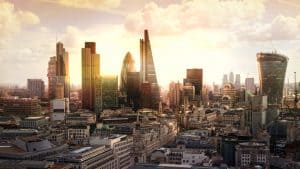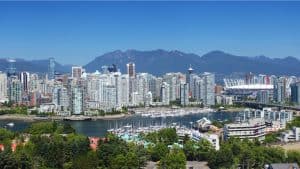Going GREEN (Building)
Net Zero Building
by Kiara
Construction projects and building emissions are some of the most important contributors to pollution on the planet. Humans are becoming more urbanized every year - the world will soon be at 70% urbanization. Cities are responsible for much of the Earth’s pollution, despite taking up a fraction of its area. UNEP reports that, "when adding emissions from the building construction industry on top of operational emissions, the [building] sector accounted for 38% of total global energy-related CO2 emissions [in 2020]."
Today, we’re going to look at 3 cities that are trying to reverse the trend - 3 cities en route to net zero building. It should be noted that a number of cities - read about 28 of them here - are trying to achieve this ambitious goal. And the state of California is also making a net zero building push.
It’s important to remember that net zero building is complex - there’s almost always some amount of carbon emissions in the building process. As such, these cities are committed to achieving net zero carbon emissions in operation by 2050 - with the buildings under their direct operation slated to hit net zero emissions in operation by 2030.
Optimally, using some combination of carbon capture technology and renewable energy, these cities will eventually achieve carbon negative operations before too long. By doing so, they’ll actually reduce the amount of carbon in the atmosphere.
The three cities we chose highlight some of the many ways in which carbon neutrality can be achieved. They were chosen because of their distance from one another, as well as the different strategies they’ve employed. This shows that cities in disparate regions can employ various means to achieve the same goal.
London, UK
 London’s ambitious plan goes beyond simply becoming a zero emission city - they’re also aiming to become a zero waste city. By 2026, no biodegradable or recyclable waste will be sent to landfills. By 2030, they aim to have 65% of their waste be recyclable.
London’s ambitious plan goes beyond simply becoming a zero emission city - they’re also aiming to become a zero waste city. By 2026, no biodegradable or recyclable waste will be sent to landfills. By 2030, they aim to have 65% of their waste be recyclable.
This highlights an important part of the “green city” philosophy - it goes beyond simply building green. They’ve also created the world’s first Ultra Low Emissions Zone - in which vehicles need to pay a daily fee to be permitted to drive.
These green initiatives couple well with London’s net zero building goals. So how exactly is London building green? They’re using a number of incentives, including:
- Grants for tree planting, community gardens, and the creation of other green spaces
- Retrofitting old homes to reach green standards
- A commercial boiler scrappage program that incentivizes the use of heat pumps in commercial spaces
- Requiring all new major developments to be zero carbon
- The implementation of the Solar Together program to encourage group purchasing of solar panels
These are just some of the many incentives that London is rolling out. Onto our next city!
Tshwane, South Africa
Tshwane and London are two very different cities. Tshwane isn’t coastal, and it’s much hotter than London. As such, they’re employing different innovative strategies to create net zero buildings - no boiler scrappage needed here.
Instead, the city is focused on renewable energy and densification as the means of creating a green city - in addition to, of course, efforts to encourage and require net zero building.
Some of the tools Tshwane is using include:
- Full-cost accounting for building construction, to demonstrate that green buildings cost less than non-green buildings over time (despite their 2%-3% increase in initial cost)
- Retrofitting of old buildings
- The building of a solar park
- Replacing coal-fired power plants with biomass-fueled power plants
Again, these are just a few of the tools Tshwane is implementing - by focusing on densification, higher density is to be expected. It’s easier to build one green high-density building than several green low-density buildings - it also requires less infrastructure.
Now, on to Vancouver!
Vancouver, Canada
 Vancouver has an ambitious plan for building green - laid out in their “Climate Emergency Action Plan”. This plan includes urban forestry and other natural carbon sequestration initiatives. It also includes their Zero Emissions Building plan, which includes:
Vancouver has an ambitious plan for building green - laid out in their “Climate Emergency Action Plan”. This plan includes urban forestry and other natural carbon sequestration initiatives. It also includes their Zero Emissions Building plan, which includes:
- Zero emissions in all new buildings by 2030
- A 40% reduction in embodied emissions by 2030 (emissions caused by the building process)
- A green home retrofit plan
- Incentives that allow projects to be zoned for more floor space provided they reach certain green milestones
Some of Vancouver’s initiatives are made easier by federal grants, including the Canada Greener Homes Grant for Solar.
Building green is just one of the many ways we can reduce our carbon emissions. Cities should also focus on incentives for existing homeowners to go green. For example, a municipality might provide rebates for home EV charging stations to encourage electric vehicle use.
If every city in the world pursued targets as ambitious as the cities we discussed here - and the other 25 cities who are targeting net zero building emissions by 2050 - we could drastically reduce our impact on the climate.
Activism is key. Petition politicians in your city to actively set and pursue ambitious targets.
Author's bio
Kiara is a part of the marketing team at Quik-Therm Insulation, a Canadian owned and operated development and design insulation technology company. Quik-Therm’s philosophy and passion is to create physics-based building envelope solutions that are environmentally responsible, require fewer components, install faster, and cost less.